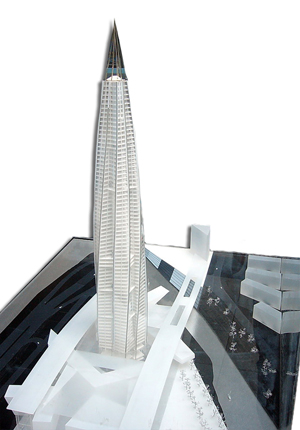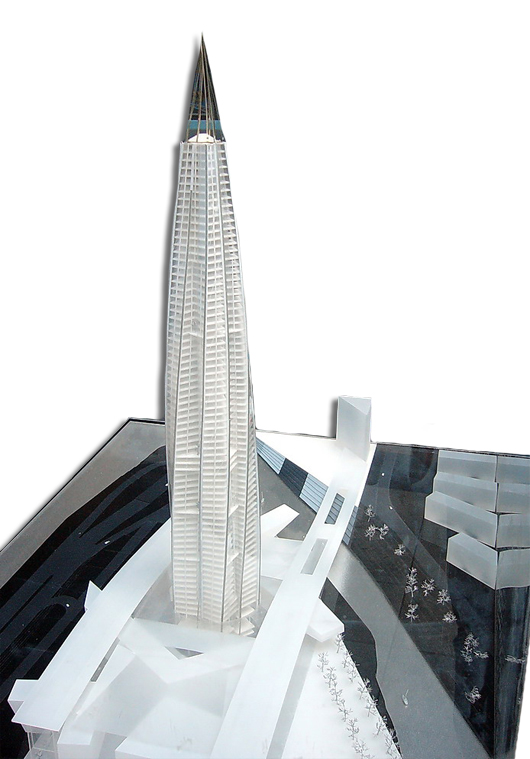
The project operator revealed quietly on its website on Monday that President Vladimir Putin’s native city had been given it the go-ahead to build the Lakhta Centre on the canal-laced city’s outskirts near the Gulf of Finland.
The statement quickly added that the spire-like glass building of nearly 500 meters (1,640 feet) would also provide “a number of public services, including stores, restaurants and cafe.”
But local media immediately grumbled about the manner in which the decision was fast-tracked without debate and made in possible violation of rules from the anxiously-watching cultural authorities at the UN cultural body UNESCO.
The proposed structure is even taller than the 403-meter (1,322-foot) one the city barred Gazprom from building in 2010 after a massive campaign by local preservation groups and UN intervention.
The city of what is now 4.7 million — sprawling because most of its buildings are distinctly squat — was built over marshland by Tsar Peter the Great in the early 18th century using slave labor at great cost of life.
That tragic start did not stop the imperial capital from developing a reputation as Russia’s “window to Europe” that embraced both Western culture and ideas.
But Saint Petersburg has since developed a reputation as the breeding ground of a new generation of Kremlin insiders that descended on Moscow with Putin in the past decade and now runs Russia with a decidedly authoritarian twist.
The authorities’ apparent intention to put up what is effectively a monument to the state’s most important enterprise prompted UNESCO to threaten to exclude the city’s entire historic centre from its list of World Heritage sites.
Putin then grudingly and urged the locals to reconsider. The governor’s office gave up on the original prominent location but not the Gazprom tower idea itself.
The new site sits on the northwestern edge of the city near the Gulf of Finland in an area that had remained largely undeveloped until recent years.
But activists said this would hardly help address the basic problem — that the shining object of unusual shape would still loom over the venerable city’s horizon and be visible from almost any spot.
“Even nine kilometers (5.6 miles) from the center, the building will be the most prominent object that an eye can see,” said local legislature member Boris Vishnevsky of the opposition Yabloko party.
Gazprom has a close association with Saint Petersburg and currently spends tens of millions of dollars per year to sponsor its championship-winning football team Zenit.
But scandal hit Gazprom almost immediately when local media noted that the decision to build at the new location had been reached nearly two weeks before a planned public debate on the project.
“Of course it would have been more logical to hold the hearings first and make the decision later,” Saint Petersburg’s zaks.ru news website quoted construction adviser Alexander Karpov as saying. “But it seems that considering how poorly the last hearings went, (Gazprom’s) project manager decided not to make the same mistake again.”
# # #
ADDITIONAL IMAGE OF NOTE


